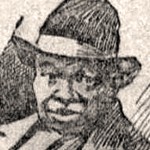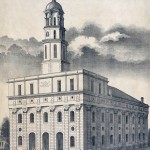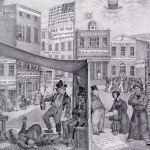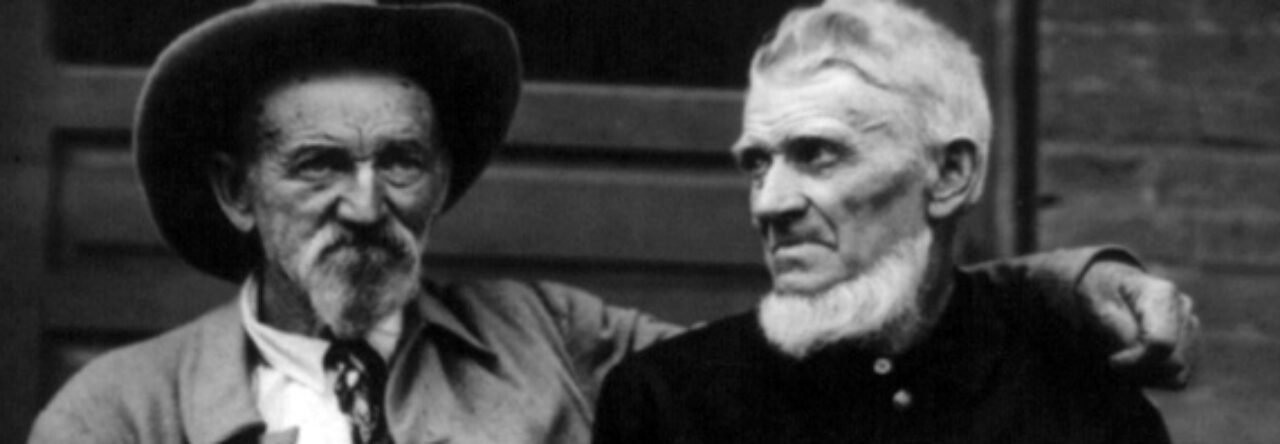 As slaves revolted in Virginia and American settlers rebelled against Mexico in Texas, the decade saw the further consolidation of settlement. This was especially true in the Midwest, where Michigan became a state and Wisconsin and Iowa were organized as territories, and along the banks of the Mississippi, where Arkansas was admitted to the Union in 1837. The Census of 1830 was the first to use a uniform printed schedule for counting and tallied 12,858,670 Americans, of whom 2,009,050 were slaves.
As slaves revolted in Virginia and American settlers rebelled against Mexico in Texas, the decade saw the further consolidation of settlement. This was especially true in the Midwest, where Michigan became a state and Wisconsin and Iowa were organized as territories, and along the banks of the Mississippi, where Arkansas was admitted to the Union in 1837. The Census of 1830 was the first to use a uniform printed schedule for counting and tallied 12,858,670 Americans, of whom 2,009,050 were slaves.
Railroads Booming
 There was thirty miles of track in the United States in 1830. Within twenty years there would be 9,000. Nine railroads were chartered in 1831, sixteen in 1831, and twenty-six in 1832 alone. No longer dependent on imported British locomotives, rolling stock, and expertise, Americans began developing their own equipment, like the DeWitt Clinton, pictured here, built for the Mohawk and Hudson Railroad Company in 1831.
There was thirty miles of track in the United States in 1830. Within twenty years there would be 9,000. Nine railroads were chartered in 1831, sixteen in 1831, and twenty-six in 1832 alone. No longer dependent on imported British locomotives, rolling stock, and expertise, Americans began developing their own equipment, like the DeWitt Clinton, pictured here, built for the Mohawk and Hudson Railroad Company in 1831.
Slave Education
 Following Nat Turner’s Revolt in Virginia, that state and several others passed draconian laws forbidding slaves the right to learn how to read. Louisiana had banned slave education the year before the uprising but after 1831 the ban spread across the South. Virginia’s law included free blacks and provided for twenty lashes in punishment, while Alabama threatened its citizens with a $500 fine for teaching any black person to “spell, read, or write.” Widespread black illiteracy would prove a significant hurdle when emancipation came in 1865.
Following Nat Turner’s Revolt in Virginia, that state and several others passed draconian laws forbidding slaves the right to learn how to read. Louisiana had banned slave education the year before the uprising but after 1831 the ban spread across the South. Virginia’s law included free blacks and provided for twenty lashes in punishment, while Alabama threatened its citizens with a $500 fine for teaching any black person to “spell, read, or write.” Widespread black illiteracy would prove a significant hurdle when emancipation came in 1865.
The Latter Day Saints
 In April 1830, Joseph Smith, Jr. founded the Church of Christ in western New York based on his revelations he published as the Book of Mormon the month before. He moved his congregation to Missouri, where he fought a running battle with the people and state government before being expelled in 1839. By then called the Church of Jesus Christ of Latter Day Saints, the denomination reconstituted in Nauvoo, Illinois where it grew in power and again faced resistance. Smith was murdered by a mob in 1844 in Carthage, Illinois and many of his followers moved once again, this time to the Utah Territory.
In April 1830, Joseph Smith, Jr. founded the Church of Christ in western New York based on his revelations he published as the Book of Mormon the month before. He moved his congregation to Missouri, where he fought a running battle with the people and state government before being expelled in 1839. By then called the Church of Jesus Christ of Latter Day Saints, the denomination reconstituted in Nauvoo, Illinois where it grew in power and again faced resistance. Smith was murdered by a mob in 1844 in Carthage, Illinois and many of his followers moved once again, this time to the Utah Territory.
The Panic of 1837
 A lengthy period of prosperity came to an end in April 1837 when a combination of questionable bank practices, inflation, and land speculation brought a devastating series of failures to hundreds of banks and brokerage houses in New York City. Within weeks, the entire country was involved in a deep recession that last for around five years. While unemployment everywhere reached record levels, the South was particularly hard hit, with cotton prices reaching a low of five cents a pound, down from nearly twenty cents earlier in the decade.
A lengthy period of prosperity came to an end in April 1837 when a combination of questionable bank practices, inflation, and land speculation brought a devastating series of failures to hundreds of banks and brokerage houses in New York City. Within weeks, the entire country was involved in a deep recession that last for around five years. While unemployment everywhere reached record levels, the South was particularly hard hit, with cotton prices reaching a low of five cents a pound, down from nearly twenty cents earlier in the decade.
Periodical Reading
 For most Americans besides southern slaves (see above) literacy was on the increase and the decade saw a significant increase in available literature, particularly less expensive periodicals. Louis Godey founded his Lady’s Book in 1830 and it became the preeminent women’s magazine of the age. William Lloyd Garrison’s fiery and influential abolitionist newspaper The Liberator began in 1831. James Gordon Bennett founded the New York Herald in 1835 and it became the center of his newspaper empire. Most periodicals, however, concentrated on religious topics.
For most Americans besides southern slaves (see above) literacy was on the increase and the decade saw a significant increase in available literature, particularly less expensive periodicals. Louis Godey founded his Lady’s Book in 1830 and it became the preeminent women’s magazine of the age. William Lloyd Garrison’s fiery and influential abolitionist newspaper The Liberator began in 1831. James Gordon Bennett founded the New York Herald in 1835 and it became the center of his newspaper empire. Most periodicals, however, concentrated on religious topics.

Leave a Reply